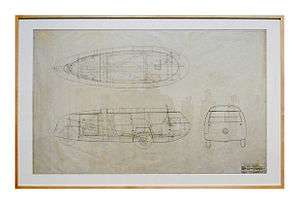Rear-engine, front-wheel-drive layout

A rear-engine, front-wheel-drive layout is one in which the engine is between or behind the rear wheels, and drives the front wheels via a driveshaft, the complete reverse of a conventional front-engine, rear-wheel-drive vehicle layout.
It has remained an extremely uncommon drive layout throughout automotive history, used only by a few prototypes and concept cars, such as the 1937 "Howie-Wiley Machine Gun Carrier" (nicknamed "Belly-Flopper"), Buckminster Fuller’s 1933 Dymaxion car, which was able to turn within its wheelbase thanks to rear-wheel steering, and the 1947 Gregory Sedan.[1][2]
There is some interest in developing the idea for use in cars of the future, as evidenced by the patent application of inventor–engineer Michael Basnett at Rover Group (GB), who proposes a front transaxle design, rear flat engine architecture.
According to the patent, the layout is designed to be advantageous in terms of crash performance by increasing the front crumple zone, in allowing greater styling freedom, in enhanced ride via reduced noise, vibration, and harshness, and in lowered center of gravity providing improved handling, braking and roll characteristics. Its main disadvantage is the lack of weight over the drive wheels, particularly under hard acceleration as weight shifts to the rear.[3]
In 1932, at Coleman Motors, based in Littleton, Colorado, chief designer Harleigh Holmes designed and built an automotive prototype named Maroon Car[4] which had front-wheel drive by a rear-mounted V-8 engine. Only one was built and the vehicle was never placed in production.[5]
References
- ↑ The Car That Inspired The Jeep Was Completely Bonkers – Jalopnik (archived)
- ↑ 1947 Gregory Sedan – Lane Motor Museum
- ↑ www.thirteen.org Dymaxion Transport - accessed 21 March 2010
- ↑ Harleigh Holmes and the Coleman Motor Company Littleton government history webpage
- ↑ "Rear Engine and Front Drive in Same Auto" Popular Mechanics, August 1930